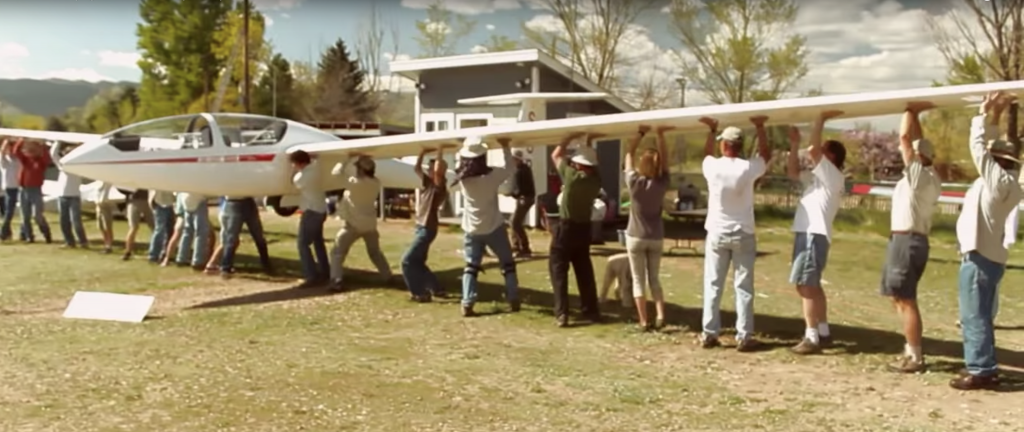Strategic Planning Guide for Glider Clubs
The SSA has put together a very useful framework to assist glider clubs in the process of developing a strategic plan. It covers the development of a vision, mission, objectives, and specific strategies. It also provides tips for turning the strategies into concrete action plans and measuring progress and it concludes by listing common pitfalls that could hinder the execution of the plan.
Attracting and Retaining Members
Originally based on the article “Gliding is Passion (in German)” I have compiled a list of suggestions based on best practices deployed by different soaring clubs to help clubs retain existing members and attract new ones. I would love to hear from you if your club is doing things that have proven particularly successful and which should be added to the list.
- Event marketing and cooperative PR Campaigns. E.g. project days in schools; cooperation with schools (e.g. incorporating soaring into the school’s science curriculum); cooperation with scouting programs and similar youth organizations; cooperation with companies (e.g. soaring days as part of corporate events or team-building initiatives); soaring flights as “prize” giveaway for shopping centers, car dealerships, etc. Leverage soaring simulators wherever possible.
- Active PR presence, especially in social media and club web page. Use videos, imagery, highlight individuals. Currency of web-presence is key. Contact local TV and radio stations. Use soaring flights as prize giveaways.
- Marketing materials. Good club video (appropriate for the target audience – not experienced pilots!). Attractive club flyer/ information handout. Contact information! Clearly display contact information at airport easily accessible to visitors. Display information about glider port at hiking paths in vicinity of airport.
- Prospective member information. Include “typical total cost of soaring” for new members. Be transparent and realistic. Include everything (fees, tows, instruction, materials, etc.) Calculate for the year and show as a monthly average cost.
- Member engagement, also beyond soaring. Active social club activities beyond soaring (holiday parties, hiking trip, skiing trip, bicycling event, museum trip, etc.) Community building, include family members. Club soaring awards and award banquets.
- Soaring partnerships with other clubs/airports. Soaring camps at different sites, soaring exchange programs. Including in other states, perhaps other countries. Soaring safaris with other club members.
- Mentorship and ongoing training for already licensed pilots. Land-out practice, type checkout days, theory seminars, practical mentorship in two-place ships, assistance with XC task planning. Also, spin refresher training days, target landing contests, thermal practice days. Club-internal XC contests appropriate for different skills/experience levels.
- Focus on club-leadership. Term-limits, succession planning, leadership mentoring, leadership training.
- Conduct regular club self-assessments. What should we stop doing? Start doing? Do differently? Opportunity to simplify rules, processes, procedures? Be bold, visionary. Think. Re-think. Don’t fall into trap “we’ve tried this before” – now might be the time.
- Materials for new members. Must be simple to understand and accessible. Be transparent, do not hold back any “insider information”
- Club facilities at airport. Be inviting for family members, guests, etc. All members should be able to welcome visitors / interested guests. Make the first impression count.
- Exit interviews. When members leave, conduct standard exit interview to identify reasons for leaving so club can learn from it.
Retaining “Local Pilots”
The 3/2019 edition of the German language “Segelfliegen Magazin” includes an article by Michail Hengstenberg about member engagement. It is based on the author’s observation that many pilots loose their motivation after completion of their basic training – especially those who do not strive to get into XC or contest flying. His club has developed a series of initiatives to engage such members and encourage them to advance their skills by organizing events around specific themes. Some of these themes include:
- Thermal Practice. Less experienced pilots are paired with experienced XC pilots to practice and master thermaling techniques in a two place ship. E.g.: centering; maintaining 45 degree bank and constant airspeed; shifting the circle in response to wind, etc.
- Spin Refresher. Many pilots have only practiced spinning once in their training, some not at all. Staying current on how to recognize an imminent stall and spin, and practicing instinctive reactions to prevent and exit spins might one day safe a pilot’s life!
- Type Checkout Days. Some pilots get stuck with the basic trainer after completing their training and may be unnecessarily intimidated by other gliders. Such days might get members motivated to expand their skills and potential horizons.
- Target Landing Contests. These contests are fun and motivational and train important skills in case a land-out may one day become necessary.
Fostering a Safety Culture
An excellent article from Daniel Sazhin that provides very specific suggestions how Soaring Clubs can foster a safety culture. E.g., if you see someone else do something unsafe, you have to speak up – you are your brother’s keeper. You should communicate respectfully, one on one, and without being accusatory. The receiver should perceive that you have their interests at heart, and not that you want to demonstrate your superiority! Otherwise the receiver will not want to hear from you again and conceal their behavior from you.


